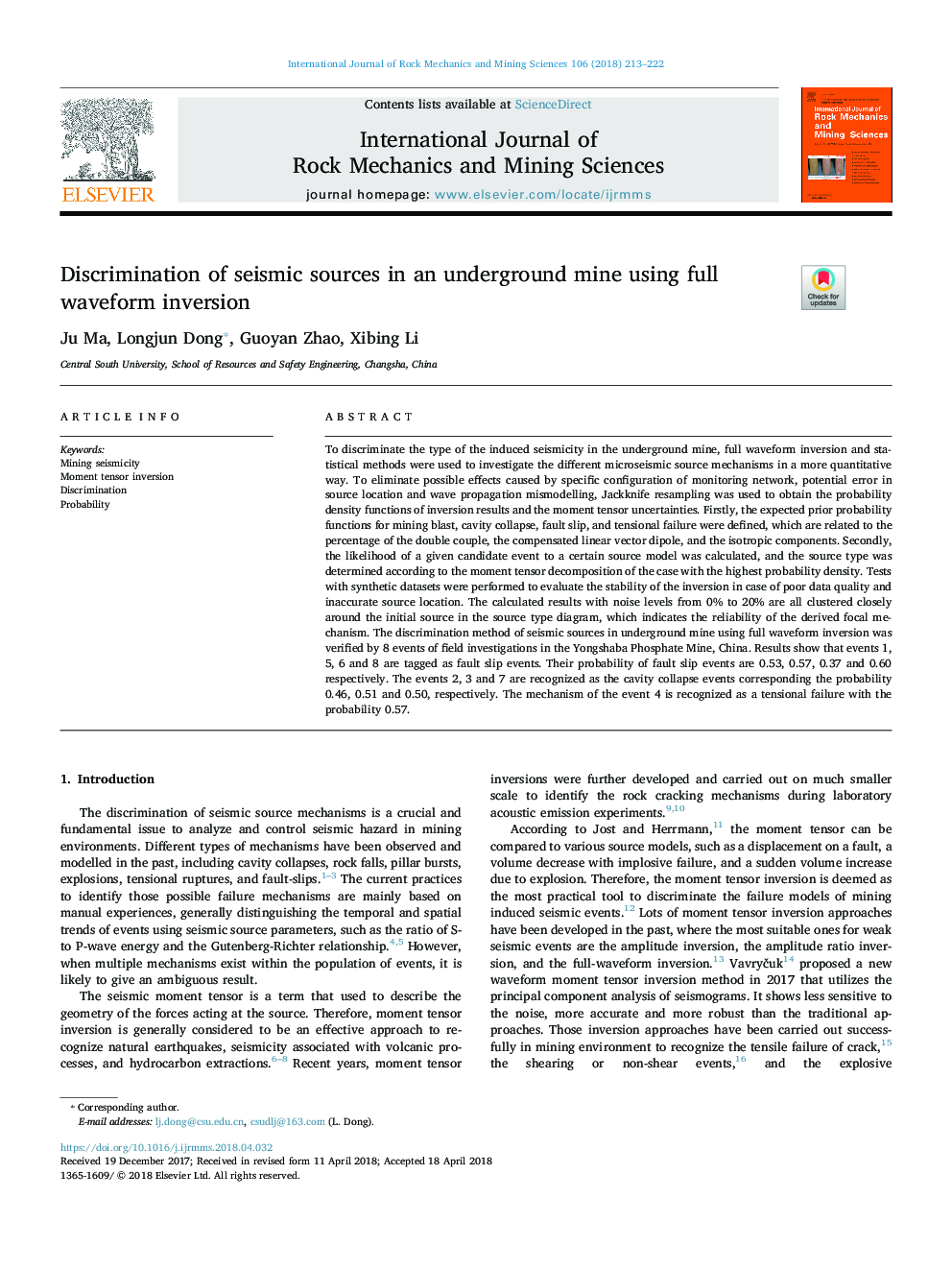| Article ID | Journal | Published Year | Pages | File Type |
|---|---|---|---|---|
| 7206202 | International Journal of Rock Mechanics and Mining Sciences | 2018 | 10 Pages |
Abstract
To discriminate the type of the induced seismicity in the underground mine, full waveform inversion and statistical methods were used to investigate the different microseismic source mechanisms in a more quantitative way. To eliminate possible effects caused by specific configuration of monitoring network, potential error in source location and wave propagation mismodelling, Jackknife resampling was used to obtain the probability density functions of inversion results and the moment tensor uncertainties. Firstly, the expected prior probability functions for mining blast, cavity collapse, fault slip, and tensional failure were defined, which are related to the percentage of the double couple, the compensated linear vector dipole, and the isotropic components. Secondly, the likelihood of a given candidate event to a certain source model was calculated, and the source type was determined according to the moment tensor decomposition of the case with the highest probability density. Tests with synthetic datasets were performed to evaluate the stability of the inversion in case of poor data quality and inaccurate source location. The calculated results with noise levels from 0% to 20% are all clustered closely around the initial source in the source type diagram, which indicates the reliability of the derived focal mechanism. The discrimination method of seismic sources in underground mine using full waveform inversion was verified by 8 events of field investigations in the Yongshaba Phosphate Mine, China. Results show that events 1, 5, 6 and 8 are tagged as fault slip events. Their probability of fault slip events are 0.53, 0.57, 0.37 and 0.60 respectively. The events 2, 3 and 7 are recognized as the cavity collapse events corresponding the probability 0.46, 0.51 and 0.50, respectively. The mechanism of the event 4 is recognized as a tensional failure with the probability 0.57.
Related Topics
Physical Sciences and Engineering
Earth and Planetary Sciences
Geotechnical Engineering and Engineering Geology
Authors
Ju Ma, Longjun Dong, Guoyan Zhao, Xibing Li,
